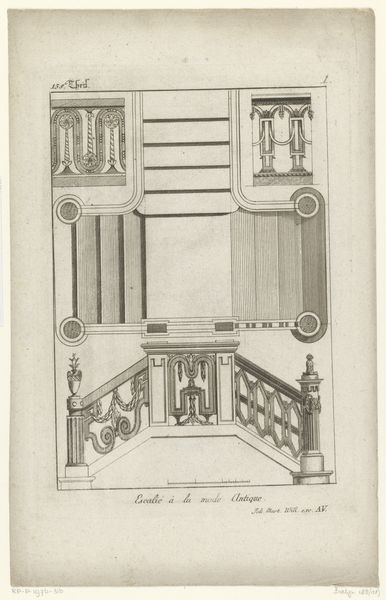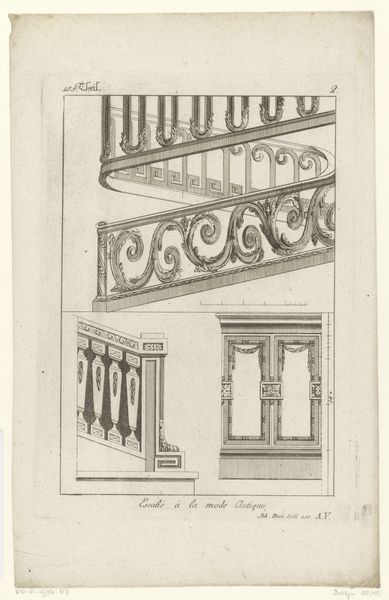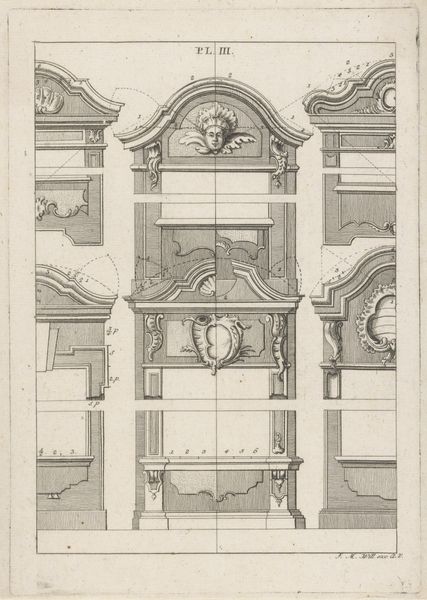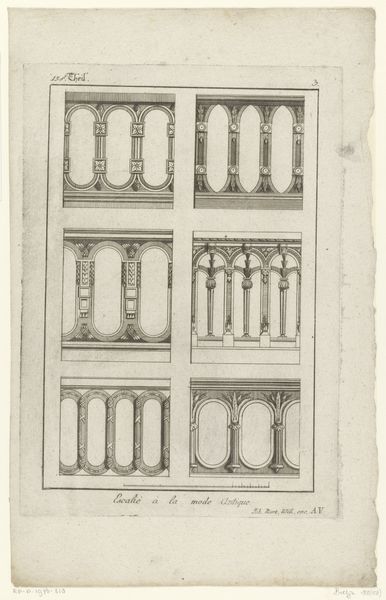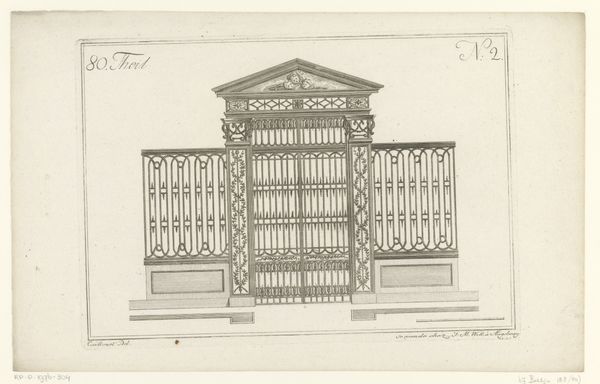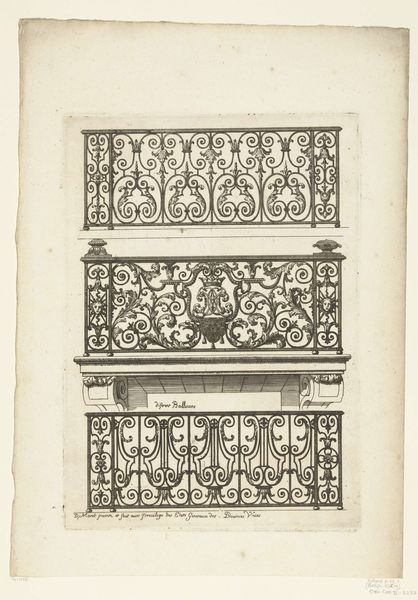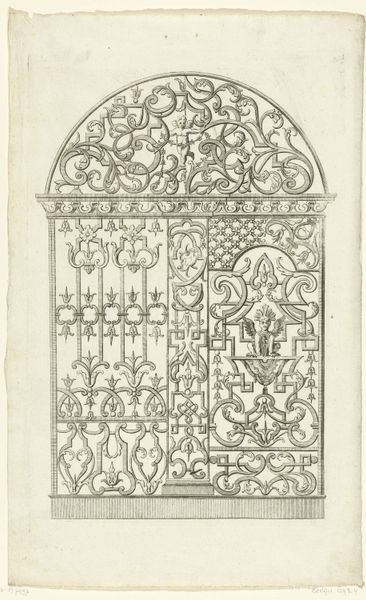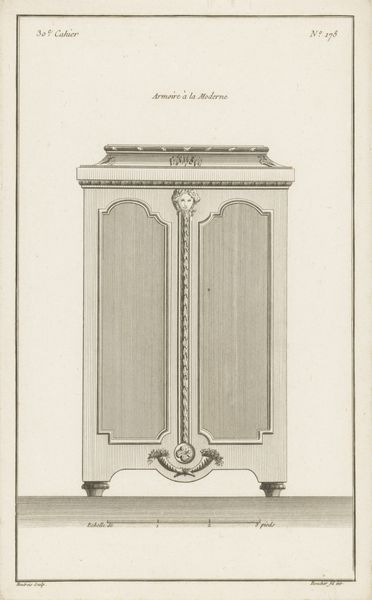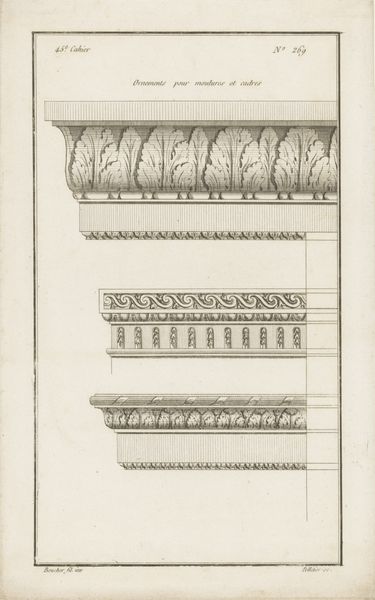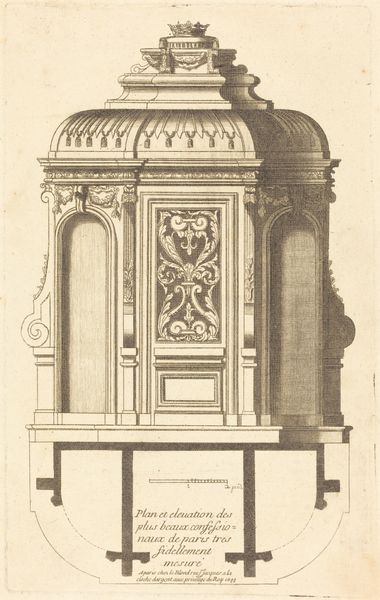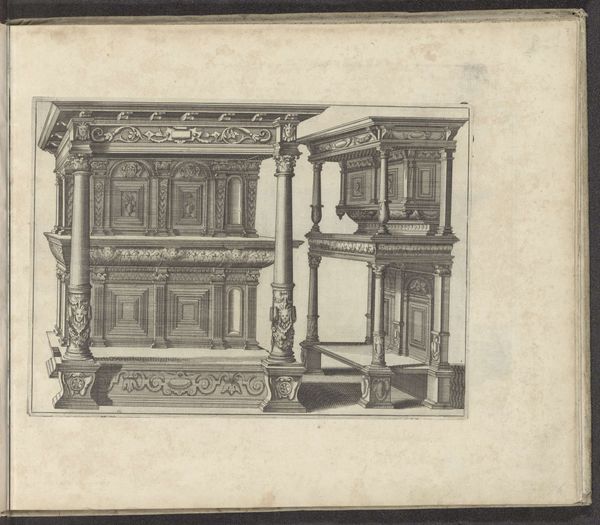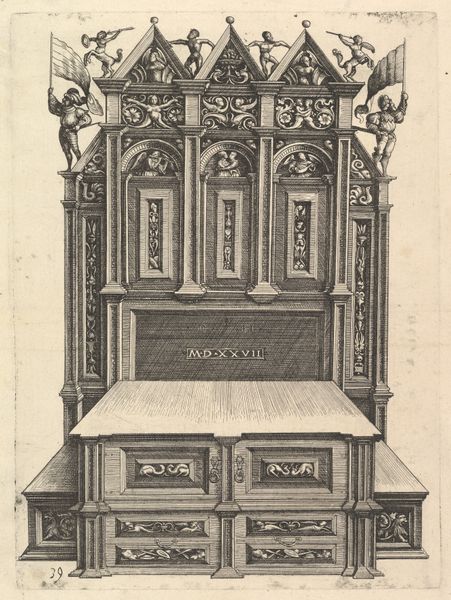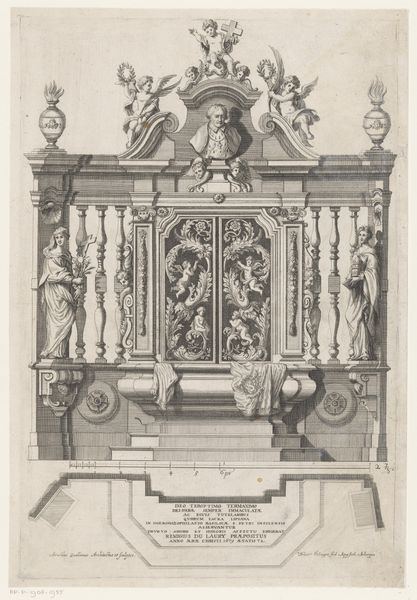
Dimensions: 430 × 372 mm (plate); 459 × 391 mm (sheet)
Copyright: Public Domain
Gabriel de Saint-Aubin created this print, "Almanach of the Gods for the Year 1768," to literally mark time in eighteenth-century France. But it also tells us how time itself was socially constructed. Each month is represented in a Classical architectural format with a god in the lunette. This was an era where the arts and sciences were often displayed together, but here the artist is also making an implicit claim for the status of the arts. A calendar was not simply a tool for organizing daily life; it was a symbolic representation of the cosmos, rooted in ancient mythology. The artist appropriates the authority of the Classical world for his own time, as academies and museums began to define the art world. Almanacs like this served as powerful cultural artifacts that shaped people's understanding of their place in the world. To understand this print fully, a historian might consult period documents, such as other almanacs, art criticism, and institutional records. The meaning of the art is always contingent on its historical context.
Comments
No comments
Be the first to comment and join the conversation on the ultimate creative platform.
